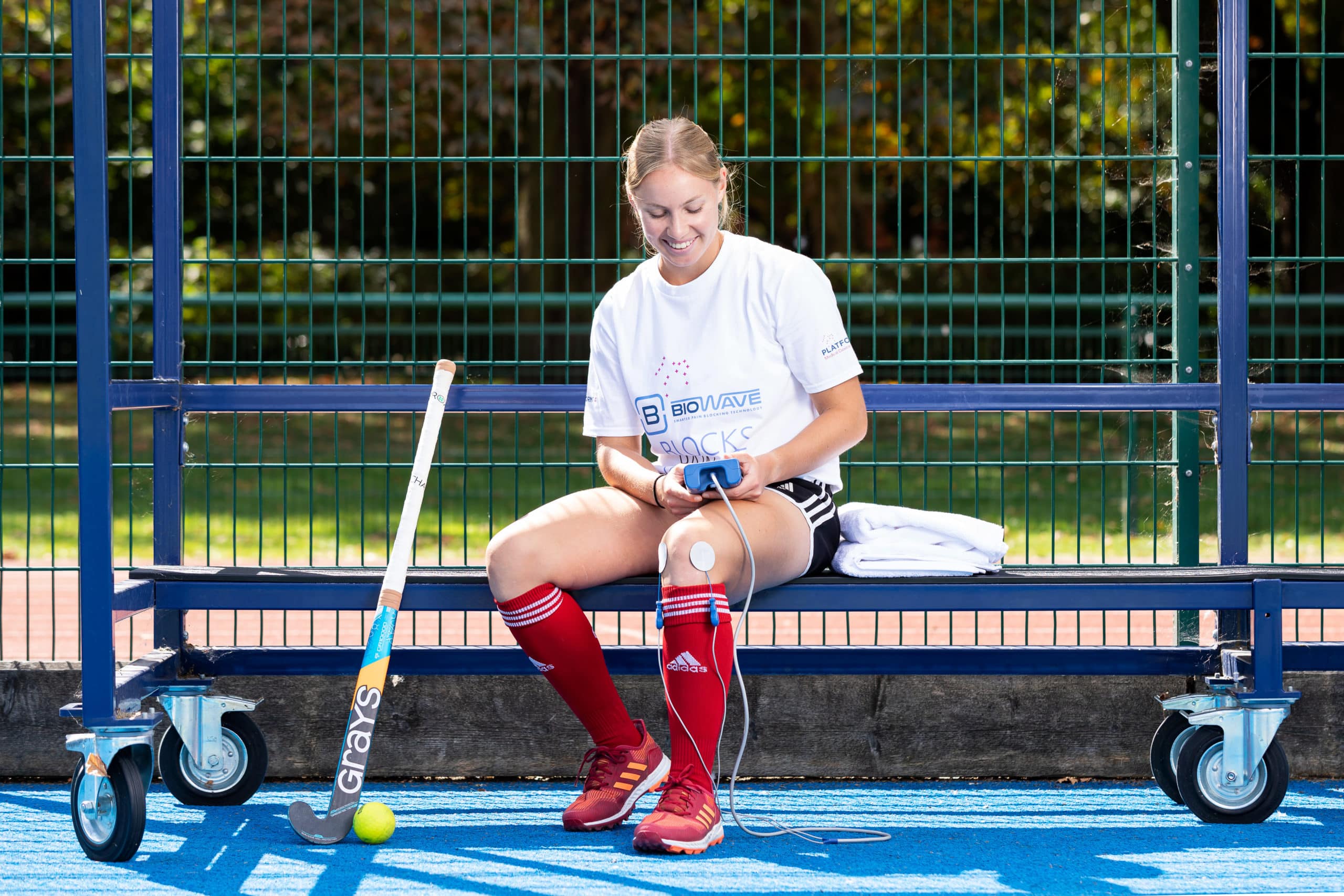
BioWaveHOME®
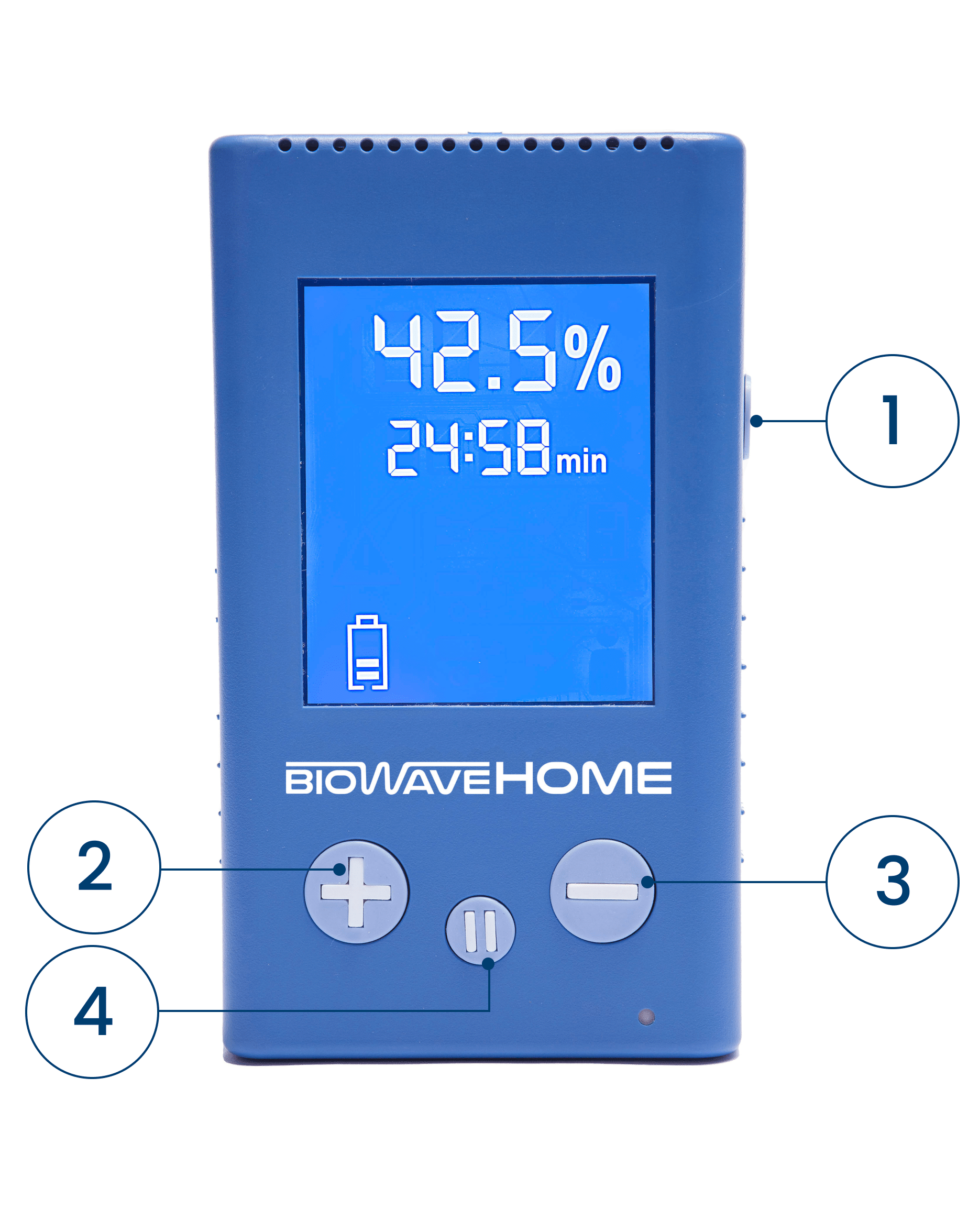
There are 4 buttons that control the device:
- Power ON/OFF button
- PLUS (+) button to increase intensity
- MINUS (–) button to decrease intensity
- PAUSE button to pause treatment
Important:
- Turn on device AFTER you have completed the first 4 steps in Directions for Use.
- Please charge battery at least 1x per week.
Directions for Use
See User’s Manual for Detailed Instructions


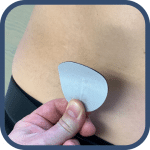
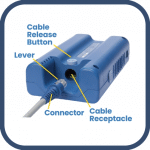

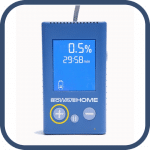
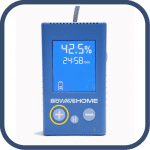
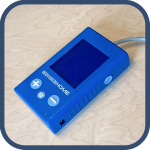
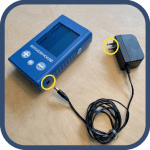
Electrode Placement Rationale
BioWave Noninvasive Electrodes
The BioWaveHOME Pain Therapy System can be used with 3 different sized sets of BioWave Noninvasive Electrodes to focus the active electrical fields to different parts of the body:
1. B-Sets 2. E-Sets 3. U-Sets
B-Set: Pain in Two Locations
The B-set is comprised of two 2.0″ diameter round equal area pain site electrodes for treating:
- directly over 2 locations of pain;
- over the region or source of pain, and over the most painful location that is closest to the origin of pain (for example, for sciatica, one pad is placed over the spine (origin) and one pad is placed on the buttock (most painful location closest to origin);
- one inch apart from one another to treat a large area of pain
The B-Set is used for treating pain in the following areas
- pain in one or two locations in the back including, buttocks, lower back or mid back region
- radiculopathies (radiating pain down the back or side of the leg)
- pain in the two locations in the hip or groin
- pain in two locations in the cervical spine, shoulders or knees
- pain centered directly in the spine
- pain presenting in a large area

E-Set: Pain in a Single Location - Extremities
One 1.375” diameter round electrode placed over the pain site, andone 2” x 4” rectangular dispersive electrode placed over a bonyprominence – a comfortable location to receive stimulation.
Pain conditions treated with E-set Electrodes include:
- One location of pain on extremities including knees, ankles, feet, toes, neck, shoulders, elbows, wrists, hands and fingers
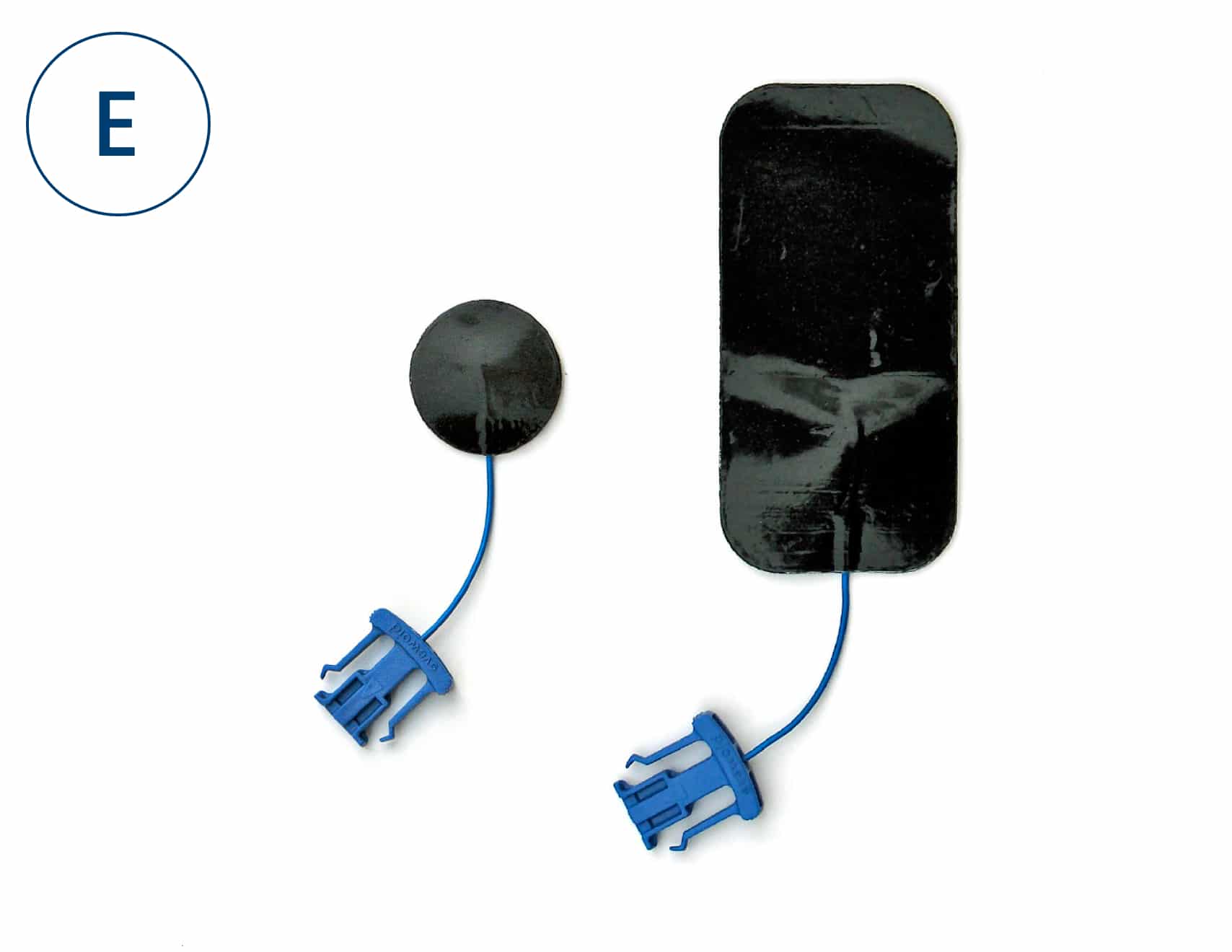
U-Set: Pain in a Single Location - Mid-torso
- One location of pain in the mid-torso part of the body including:ribs, obliques, hips, buttocks, groin, adductors, abductors,gluteus maximus, hamstrings and quadriceps

Warning: Electrodes must never touch each other
- Minimum Spacing Between Electrodes = 1 inch
- No Maximum Spacing Between Electrodes
Pro Tips
Body position during treatment
Position of the body during treatment is important. Generally, the tissue being treated should be a little taut or in a stretch position. Generally, sitting in a supported position in a chair, couch, or bed is best for most treatment locations on the body. See User’s Manual for more detailed information on optimal Body Position for different treatment locations.
Motion during treatment
The sensation from the treatment is a deep smooth tingling and pressure sensation as the muscle is held in tension in the volume of tissue being treated. Motion may cause a stonger or weaker sensation and will cause the location of the internal electrical field to shift slightly. Shifting of the electrical field is most prevalent when treating the shoulders, elbows, wrists, hands, fingers, and feet.
The goal is to gently move the joint at the location to shift the sensation caused by the electrical field so that it focuses directly onto and encompasses the primary location of pain. This is a fine tuning of the treatment that will provide the best treatment results.
Electrode Placement Examples
- Pads must not touch each other when the unit is turned on – one inch is the minimum spacing.
- Pads are reusable but must be tacky to the touch. If not, please use a new set of pads.
- Pads can typically be reused 8-10 times.
-
B-Set
2 Locations of Pain -
E-Set
1 Location of Pain -
U-Set
1 Location of Pain
Areas of treatment

Neck
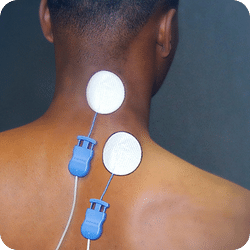
Radiating Neck or Cervical Pain
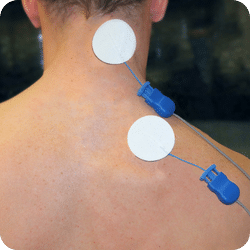
Neck or Cervical Pain in Two Locations

Bilateral Neck or Cervical Pain

Neck or Cervical Pain in Multiple Discs
TMJ
Shoulders
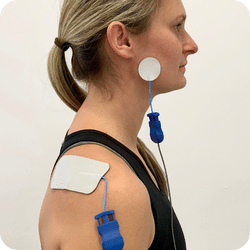
Temporomandibular Joint Pain or Pain Along Trigeminal Nerve
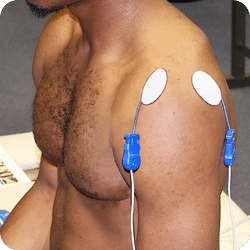
Shoulder Pain Throughout the Joint or Frozen Shoulder

Shoulder Pain in Two Locations
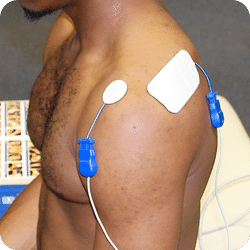
Pain at Top or Throughout Shoulder (e.g. AC Sprain or Frozen Shoulder )
Shoulders
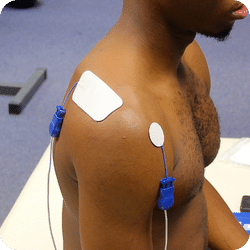
Pain in Front of Shoulder (e.g. Biceps Tendinitis)
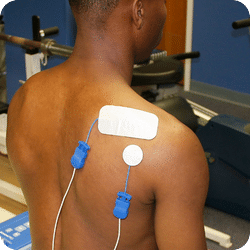
Pain in Back of Shoulder (e.g. Infraspinatus Strain)
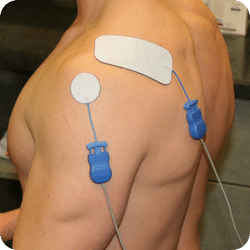
Pain in Edge of Shoulder (e.g. Rotator Cuff Tendinitis)
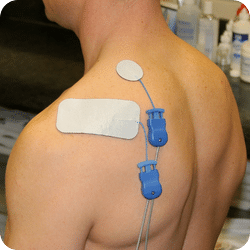
Trapezius Pain in One Location (under small round pad
Shoulders
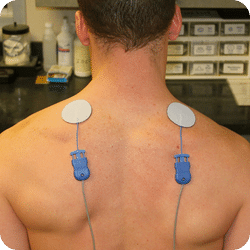
Trap Pain in Two Locations (e.g. Bilateral Trapezius Pain)
Ankles & Feet
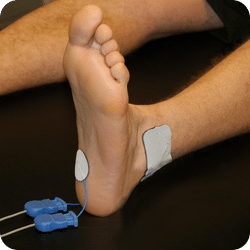
Plantar Fasciitis

Achilles Tendinitis (Primary Pain in Achilles Tendon)
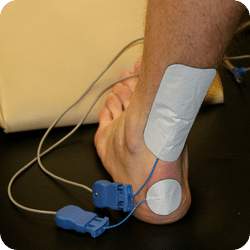
Achilles Tendinitis (Primary Pain in Heel)
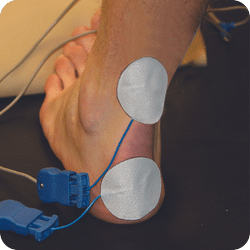
Achilles Tendinitis (Pain in Heel and Achilles Tendon)
Ankles & Feet
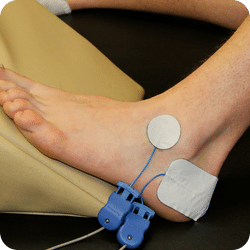
Lateral Low Ankle or Foot Pain in One Location

Foot or Ankle Pain in Two Locations, High Ankle Sprain
Low Back

Radiating Back Pain – One Pad Over Origin of Pain, One Pad Over First Pain Site Closest to Origin (Pads Must be on Skin)
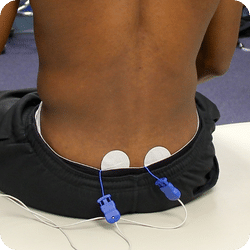
Sacroiliac (SI) Joint Pain; Pain from Interstitial Cystitis
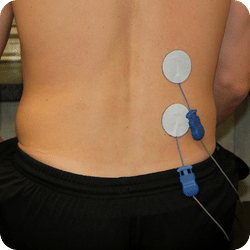
Back Pain Over Large Area (e.g. Rotational Strain)
Ankles, Feet & Toes
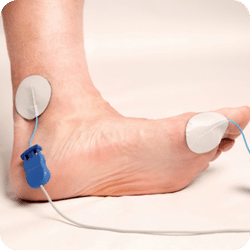
Pain from Diabetic Neuropathy (Tibial Nerve Stimulation)
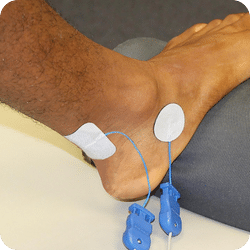
Foot Pain Beneath Ankle on Inside of Heel in One Location
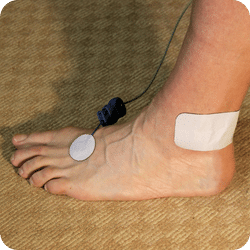
Pain in Top of Foot (e.g. Metatarsal or Neuroma Pain
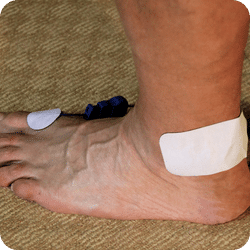
Pain in Toe Joint (e.g. Turf Toe or Phalange Pain)
Elbows
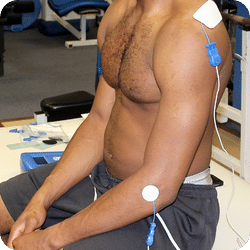
Pain in Outside of Elbow (e.g. Lateral Epicondylitis)
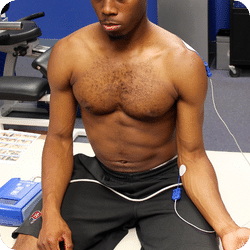
Pain in Inside of Elbow (e.g. Medial Epicondylitis)
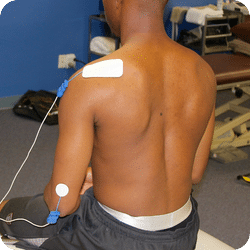
Pain Behind Elbow (e.g. Triceps Tendinitis)
WRIST / HANDS / FINGERS

Pain in back of wrist. Second pad on front of wrist (e.g. Sprains, Strains, Tendinosis)
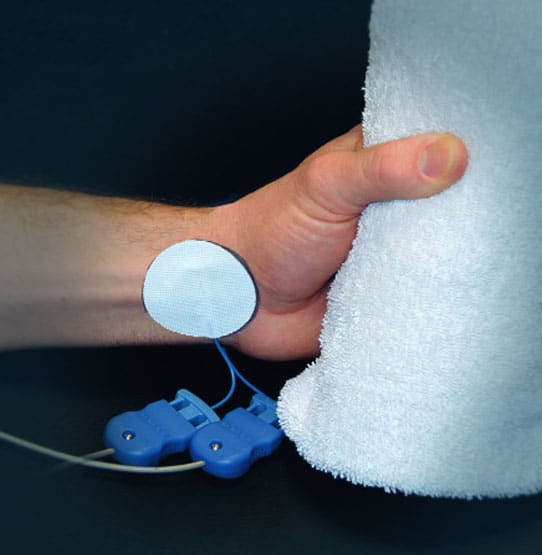
Pain in front of wrist. Second pad on back of wrist (e.g. Sprains, Strains, Tendinosis)

Thumb pain (e.g. thumb or UCL Sprain)
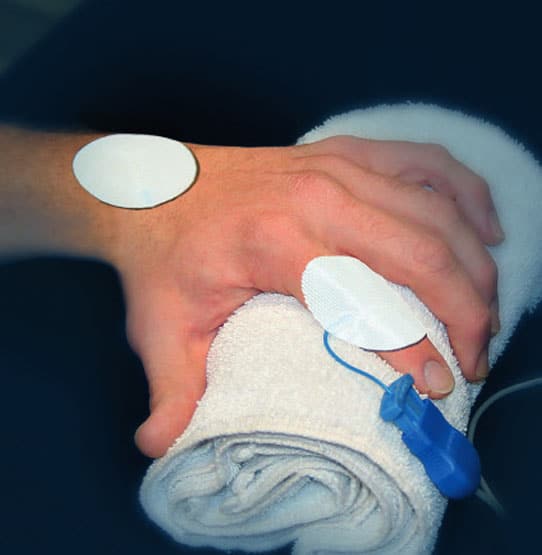
Pain in finger joints
Knees
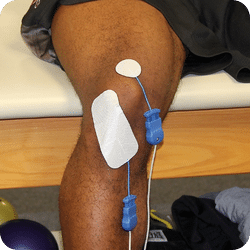
Pain Above Knee (e.g. Quadriceps Tendinitis)
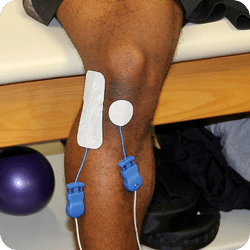
Pain Below Kneecap (e.g. Patellar Tendinitis)

Pain in Inside of Knee (e.g. Bursitis, OA, MCL Sprain)
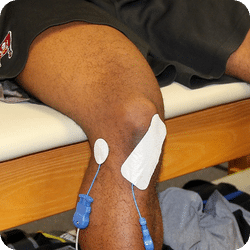
Pain in Outside of Knee (e.g. Bursitis, OA, LCL Sprain)
Knees
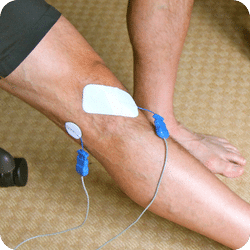
Pain in Back Side of Knee (e.g. PCL Sprain)
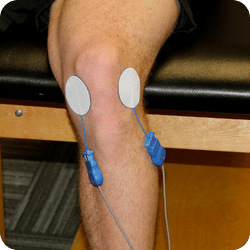
Pain Throughout Entire Knee (e.g. OA or Total Knee Replacement)
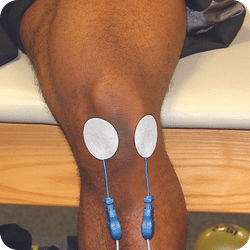
Pain Towards the Front of the Knee (e.g. ACL Sprain)
Calves
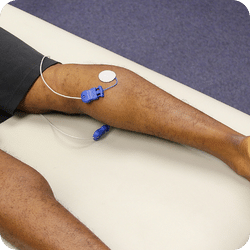
Calf Pain in One Location (e.g. Gastrocnemius Strain)
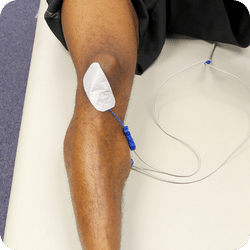
Calf Pain – Round Pad is Over Pain Site, Rectangular Pad is Angled Across Knee
Quadriceps

Quadriceps Pain in One Location

Quadriceps Pain Over Large Area
Hamstrings
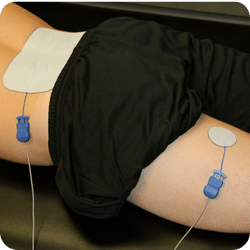
Hamstring Pain in One Location
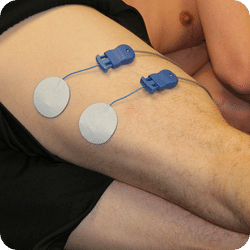
Hamstring Pain Over Large Area
Shins
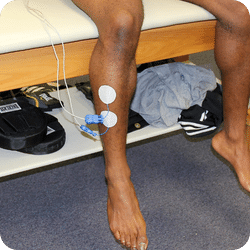
Pain in Outside of Knee (e.g. Bursitis, OA, LCL Sprain)
Illiotibial (IT) Band

Pain in Illiotibial (IT) Band in One Location
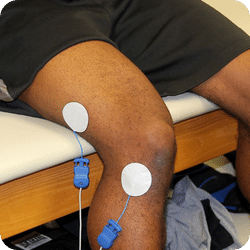
Pain in Illiotibial (IT) Band in Two Locations
Ribs/Obliques
Groin
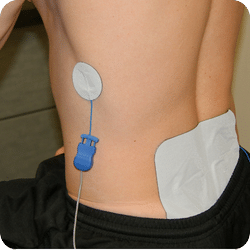
Rib or Oblique Pain in One Location

Groin Pain in One Location
Low Back

Back Pain in Two Locations (e.g. Bilateral Low Back Pain)
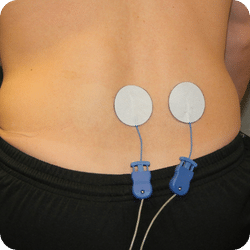
Low Back Pain on One Side of Spine (e.g. Unilateral Pain)

Low Back Pain Focused Over a Facet Joint
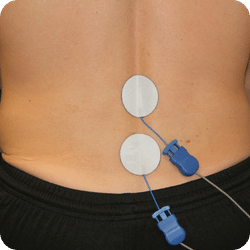
Low Back Pain Focused Over the Spine
Low Back
Hips

Radiating Back Pain – One Pad Over Origin of Pain, One Pad Over First Pain Site Closest to Origin (Pads Must be on Skin)

Sacroiliac (SI) Joint Pain; Pain from Interstitial Cystitis

Back Pain Over Large Area (e.g. Rotational Strain)

Hip Pain in One Location
Ribs/Obliques
Groin
Quadriceps

Rib or Oblique Pain in One Location

Groin Pain in One Location

Quadriceps Pain in One Location

Quadriceps Pain Over Large Area
Hamstrings
Knees

Hamstring Pain in One Location

Hamstring Pain Over Large Area

Pain Throughout Entire Knee (e.g. OA or Total Knee Replacement)

Pain Towards the Front of the Knee (e.g. ACL Sprain)
Knees

Pain Above Knee (e.g. Quadriceps Tendinitis)

Pain Below Kneecap (e.g. Patellar Tendinitis)

Pain in Inside of Knee (e.g. Bursitis, OA, MCL Sprain)

Pain in Outside of Knee (e.g. Bursitis, OA, LCL Sprain)
Knees
Illiotibial (IT) Band
Shins

Pain in Back Side of Knee (e.g. PCL Sprain)

Pain in Illiotibial (IT) Band in One Location

Pain in Illiotibial (IT) Band in Two Locations

Pain in Outside of Knee (e.g. Bursitis, OA, LCL Sprain)
Calves
Ankles & Feet

Calf Pain in One Location (e.g. Gastrocnemius Strain)

Calf Pain – Round Pad is Over Pain Site, Rectangular Pad is Angled Across Knee

Foot or Ankle Pain in Two Locations, High Ankle Sprain

Lateral Low Ankle or Foot Pain in One Location
Ankles & Feet

Plantar Fasciitis

Achilles Tendinitis (Primary Pain in Achilles Tendon)

Achilles Tendinitis (Primary Pain in Heel)

Achilles Tendinitis (Pain in Heel and Achilles Tendon)
Ankles, Feet & Toes

Pain from Diabetic Neuropathy (Tibial Nerve Stimulation)

Foot Pain Beneath Ankle on Inside of Heel in One Location

Pain in Top of Foot (e.g. Metatarsal or Neuroma Pain

Pain in Toe Joint (e.g. Turf Toe or Phalange Pain)
Neck

Radiating Neck or Cervical Pain

Neck or Cervical Pain in Two Locations

Bilateral Neck or Cervical Pain

Neck or Cervical Pain in Multiple Discs
TMJ
Shoulders

Temporomandibular Joint Pain or Pain Along Trigeminal Nerve

Shoulder Pain Throughout the Joint or Frozen Shoulder

Shoulder Pain in Two Locations

Pain at Top or Throughout Shoulder (e.g. AC Sprain or Frozen Shoulder )
Shoulders

Pain in Front of Shoulder (e.g. Biceps Tendinitis)

Pain in Back of Shoulder (e.g. Infraspinatus Strain)

Pain in Edge of Shoulder (e.g. Rotator Cuff Tendinitis)

Trapezius Pain in One Location (under small round pad
Shoulders
Elbows

Trap Pain in Two Locations (e.g. Bilateral Trapezius Pain)

Pain in Outside of Elbow (e.g. Lateral Epicondylitis)

Pain in Inside of Elbow (e.g. Medial Epicondylitis)

Pain Behind Elbow (e.g. Triceps Tendinitis)
WRIST / HANDS / FINGERS
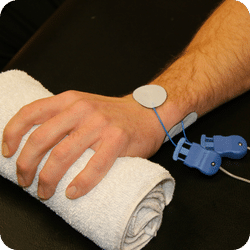
Pain in Back of Wrist (e.g. Sprains, Strains, Tendinosis)
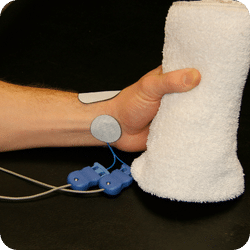
Pain in Front of Wrist (e.g. Sprains, Strains, Tendinosis)

Thumb Pain (e.g. Thumb or UCL Sprain)
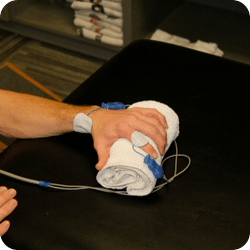
Pain in Finger Joints (e.g. Metacarpal Phalangeal Joints)
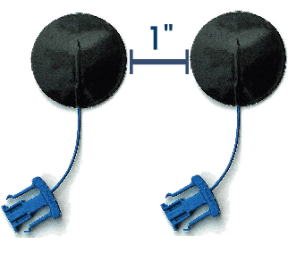
Important
Contraindications
When Not to Use BIOWAVE
- Do NOT use BioWaveGO if you have an implanted cardiac pacemaker.
- Do NOT use BioWaveGO if you have epilepsy or are prone to seizures.
- Do NOT place electrodes over the heart, or across the thoracic volume. Electrodes can be applied to the back of the thorax and lateral aspect of the upper limb (i.e. below/down the shoulder).
- Do NOT place electrodes on the front or side of the neck.
- Do NOT place electrodes on top of the head.
- Do NOT place electrodes over open wounds, broken skin, rashy skin or sensitive areas.
- NOTE: Electrodes MAY BE PLACED directly over or in the proximity of implanted metal hardware including total joint replacements, rods, plates, screws, anchors and pins. See User’s Manual for more information.
- ELECTRODES (PADS) MUST NEVER TOUCH EACH OTHER DURING THE TREATMENT
- 1.0 inch (2.6 cm) is the minimum spacing between Pads.
- There is NO maximum spacing between any Pads.
- If the edges of the Pads touch during the treatment, it may cause a burn.
- Pads typically can be reused about 8-10 times.








